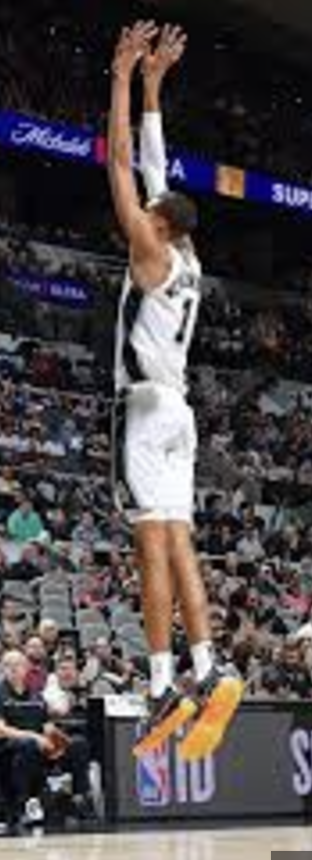Valves and murmurs
1/69
Earn XP
Description and Tags
these legit all sound the same to me. turn up fam
Name | Mastery | Learn | Test | Matching | Spaced |
|---|
No study sessions yet.
70 Terms
echo
For basically EVERY murmur what is the diagnostic test?
mitral, tricuspid
What valves close at S1
systole
S1 (lub) is the beginning of
atrial kick (gallop)
What is S4
blood hitting a noncompliant LV
What causes an S4 (be lub dup - Tennessee, heard every beat)
aortic, pulmonic
What valves close at S2
diastole
S2 (dub) marks the beginning of
ventricular gallop
What is an S3
blood striking a very compliant LV
What causes a S3 (lub dub dub - kentucky, heard every 3 beat)
RBBB, pacing from electrode on LV, PVCs, ASD, ebstein’s anomaly, triscuspid stenosis
What may cause a S1 split
inspiration increases venous return, delayed closure of pulmonic valve
How does a physiological S2 split occur
Severe HCOM, aortic stenosis, LBBB, severe HTN
What might cause a paradoxically split S2
S2 splits on expiration, together on inspiration
Describe a paradoxically split S2
ASD (prolonged RV systole)
Wide, fixed splitting (no respiratory variation) is a characteristic of
RBBB (increased RV systoles) mitral regurg, VSD
Wide, fixed that varies with inspiration is a characteristic of
best heard over apex in left lateral position, softer during inspiration
If S3/S4 is originating from the LV…
best heard over LLSB, tricuspid, subxyphoid, louder during inspiration
If S3/S4 is originating from the RV…
healthy child, athletes, hyperkinetic states, third trimester
Where might you find a normal S3
increased atrial pressure/flow rate, CHF, dilated cardiomyopathy
What might causes a pathologic S3
Apex with patient in left lateral decubitus position
Where is a S4 best heard?
AMI, ischemic cardiomyopathy, HTN, hypertensive heart, aortic stenosis
What causes an S4
Ejection click
What is the most common early systolic sound that results from the abrupt halting of aortic and pulmonic valves
loud high frequency sound, doesn’t vary with respiration, best heard at apex
Characteristics of aortic ejection click
aortic stenosis, bicuspid aortic valve, dilated aortic root
What is associated with an aortic ejection click
Opening snap
What high frequency early diastolic sound is due to an abrupt deceleration of mitral leaflets and often diminishes with inspiration?
left lateral position between apex and LLSB (closer to S2)
Where are opening snaps best heard
high frequency noise (scratchy, grating, squeaking) loudest in systole, but present in diastole as well, loudest at LLSB and during inspiration
Describe a pericardial friction rub
location, involved structure, systolic/diastolic, timing, volume/intensity, quality, pattern, radiation, special maneuvers
How are murmurs often described
moves aortic valve closer (good for aortic valve and pericarditis)
How does leaning forward affect the heart sounds
moves LV close to chest wall (good for S3, S4, mitral valve)
How does the left lateral decubitus position help murmurs
increases HCOM, decreases aortic stenosis, mitral valve prolapse moves closer to S1
How does standing affect heart sounds
increases venous return and peripheral vascular resistance, decreases HCOM, increases aortic stenosis, mitral valve prolapse moves closer to S2
How does squatting/leg raises effect heart sounds
increases regurg murmurs, VSD, S3, S4, aortic insufficiency (increases peripheral vascular resistance)
How do isometric hand grips effect heart sounds
increase HOCM, decreases aortic stenosis, mitral valve prolapse moves closer to S1 (decreases venous return)
How does valsalva effect heart sounds
increases tricuspid regurg, decreases mitral regurg, physiologic split of S2 (increases venous return to right side)
How does inspiration effect heart sounds
pregnancy, IV hydration, stress on body
What might cause a innocent systolic murmur
1-2/6 best heard at Erbs, louder when supine, disappears when sitting/standing, no radiation
Describe the typical still/flow murmur
Aortic stenosis
An obstruction of the flow of blood from the LV to the aorta typically caused by calcification of a congenital biscuspid valve, age related calcification of a valve, rheumatic disease
increased age, bicuspid aortic valve, HTN, elevated LDL, male, smoking, rheumatic valve disease
Risk factors for Aortic stenosis
dyspnea on exertion, angina, syncope, CHF symptoms
Symptoms of Aortic stenosis
harsh/grunting crescendo-decrescendo ejection murmur best hear at RUSB that radiates to the sternal notch/right carotid, S4, trill, LV heave, paradoxical split 2 are also present. Increases with squats, sitting up. Decreases with standing and valsalva
Describe the murmur of Aortic stenosis
valve replacement (aortic ballon valvotomy)
Treatment plan for aortic stenosis
Mitral valve prolapse
A congenital condition in which the mitral valve leaflets close above the annular plane during systole may promote mitral regurg
idiopathic, Marfans, familial MVP, MI, rheumatic injury, OSA, ankylosing spondylitis
Etiology of Mitral valve prolapse
tall thin body, increased catecholamines, dehydration, fam hx, Mg deficiency
Risk factors of Mitral valve prolapse

High frequency mid-systolic ejection click at LLSB that is late to holosystolic and radiates to axilla. S3, thrill, laterally displaced PMI are also present. Heard earlier in systole and louder when standing and valsalva. Decreased with squats, pregnancy, laying supine
Describe a Mitral valve prolapse murmur
beta blockers, surgical repair (with any symptoms)
Treatment plant for Mitral valve prolapse
Mitral regurg
A valvular disorder involving mitral leaflets, annulus, chordae tendineae, and papillary muscles resulting in abnormal leaking of blood across the mitral valve
MVP, rheumatic heart disease, infective endocarditis, trauma, drug induced, congenital, ischemic heart disease, non-ischemic LV systolic dysfunction, HCOM
Causes of Mitral regurg
asymptomatic, exertional dyspnea, fatigue, new onset a.fib,
Signs and Symptoms of Mitral regurg (depends on severity)
Blowing and high pitched murmur at LLSB late to holosystolic that radiates to axilla, back, and RUSB. S3, thrill, and laterally displaced PMI are also present. Increased with handgrips, decreased with Valsalva
Describe the murmur of Mitral regurg
hydralazine, nitroprusside
Treatment plan for mitral regurg to decrease afterload as a bridge to surgery
severe chronic murmur, abnormalities in LV size/function, pulmonary HTN, new onset a.fib
Indications of surgical repair of Mitral regurg
Soft mid-systolic murmur at LLSB that radiates to sternal border. Paradoxically split S2, S4 are also present. Increased by Valsalva and standing; decreased by squatting
Describe the murmur in HCOM
Holosystolic murmur at LLSB that increases with inspiration. Heading bobbing, pulsating eyes and neck are also present.
Describe the murmur in Tricuspid regurg
treat Right sided HF
Treatment for triscuspid regurg
Harsh ejection murmur at LUSB that radiates to the left clavicle. Thrill, RV heave, and widely split S2. Increases on inspiration
Describe the murmur in pulmonic stenosis
pathological
Say it with me now, Diastolic murmurs are ALWAYS

Blowing/descendo diastolic murmur best heard at Erb’s/RUSB associated with a diastolic rumble (Austin flint)
Describe the murmur in aortic regurg
ACEI, CCBs, if LV dilatation is BAD or LV dysfunction if evident (EF lower than 50%) then surgery
Treatment plan for aortic stenosis
rheumatic fever, infective endocarditis, congenital, chronic valvulitis, rheumatoid arthritis,
Causes of mitral stenosis
Low rumbling mid-diastolic decrescendo-crescendo at LLSB precede opening snap precedes murmur
Describe the murmur in mitral stenosis
anticoags (if a.fib), diuretics, percutaneous mitral balloon valvotomy (symptomatic peeps)
Treatment plan for aortic stenosis
Soft, high pitched mid diastolic rumble at LLSB preceded by an opening snap and increased with inspiration and leg raising
Describe the murmur in Tricuspid stenosis
High pitched, early diastolic decrescendo murmur at LUSB that begins with an accentuated P2 component of S2. Increased with holding breath, upright position
Describe the murmur in pulmonic regurg
fixed/split S2, midsystolic pulmonary flow/ejection murmur (big shun), mitral regurg (ostium primum), MVP (secundum)
Describe the murmur in ASD
harsh holosytolic murmur at LLSB
Describe the murmur in small VSD
harsh holosytolic murmur at LLSB with a thrill, apical impulse with lateral displacement, increased P2, diastolic rumble
Describe the murmur in moderate VSD
harsh holosytolic murmur throughout precordium with diastolic rumble at apex, precordial bulge
Describe the murmur in large VSD
washing machine over left scapula and left infraclavicular area
Describe the murmur in PDA